There are any number of reasons a dealership updates an old facility or builds new to replace an outdated building. But at the end of the day, they all point back to customer experience and serving your customers as fully and efficiently as possible.
“We feel every 2-3 decades, most infrastructure tends to need modernization. We want customers to know that we are willing to invest in ourselves in order to serve them better today and in the future,” says Jim Munroe of Monroe Tractor, a 12-store Case IH dealership in New York and New England.
See how these dealers updated their facilities below
Agri-Service Opens New Location in Fruitland, Idaho
AGCO dealer Agri-Service opened a new store in Fruitland, Idaho. The new store consolidates two old stores in Nyssa, Ore., and Caldwell, Idaho. The new facility is 30,000 square feet.
Agri-Service, an AGCO dealership group with 13 stores in Idaho, Washington and Utah, held a grand opening for its new store in Fruitland, Idaho. The expansions in both Fruitland and Marsing — the location of a new parts warehousing facility — are the result of evolving agriculture epicenters for Agri-Service, which prompted the closure of facilities in Nyssa, Ore., and Caldwell, Idaho.
“Our whole long term goal and thought process behind the new Fruitland location was trying to target and be able to reach out to new focus areas,” explains Jamen Painter, store manager for the Fruitland and Marsing locations. “So, with adding the new Fruitland location, it tied in a better location to where we could reach out and expand our territory.
Painter says the two locations that were closed were too close together and were also becoming more residential areas instead of large ag. “Location was definitely an issue because we were surrounded by industrial and residential instead of being in the farmland where we needed to be,” he says.
The new store provides a much larger shop (10,000 square feet). Painter says it also has much better tooling and has enabled Agri-Service to better serve customers as the size of equipment continues to get larger. “This new facility now has state-of-the-art tooling, a much bigger shop, overhead cranes, the things that we really needed,” he says. Plus it’s all under one roof. At the old Nyssa location, Painter says the shop was getting old and outdated and was small so the technicians often had to do a lot of work outside.
“Now, we can have double the number of mechanics working under one roof and a big thing with us right now is teamwork. And, by bringing all the mechanics together, it’s been pretty amazing, what we’ve seen just with teamwork and people working together, being under one roof,” he says.
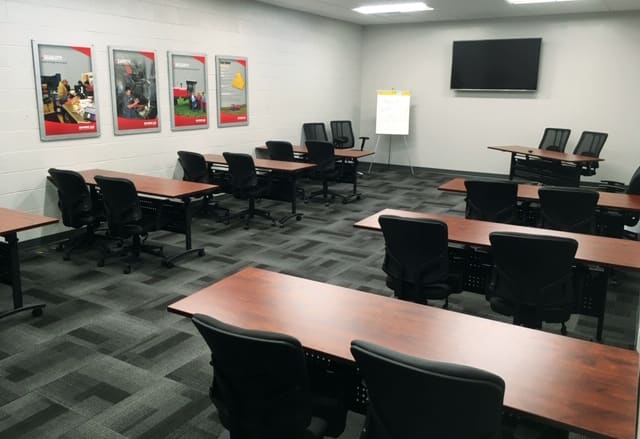
The Fruitland location includes a training room that is twice the size of any other training room in Agri-Service’s western region. It will be used for training across the region, says Jamen Painter, store manager.
In total, the Fruitland location is 30,000 square feet. Previously, the dealership didn’t have nearly enough office space, with some salespeople having to share desks. “Now, everybody has their own office, their own desk, their own base or home, which has been huge,” Painter says.
The Fruitland store also features a state-of-the-art training room, which is double the size of any other training rooms Agri-Service has in its western region. “Now, we can hold local trainings in this region and not be worried about cramming people in a small room,” he says.
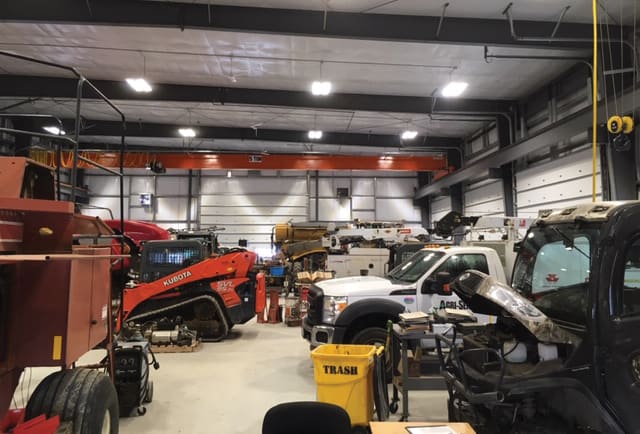
The new service shop is 10,000 square feet and features overhead cranes and has state-of-the-art tooling. The old Nyssa, Ore., location’s shop was so small that techs often had to work on equipment outside.
Parts Improvements
Agri-Service also drastically increased its parts stocking with a stackable racking system by E-Z-Rect Parts Shelving. “Our ability to house and keep our parts under cover now has doubled. Which, in the ag industry is so important. Probably the No. 1 complaint from farmers to dealers is they didn’t have any parts. Well, we don’t want that, so we doubled our parts inventory in both locations — Fruitland and Marsing — and our parts have drastically increased.”
The showroom has very high ceilings and there are stairways behind the parts counters leading to a second level of parts storage. The dealership also added additional containers for storage outside. Previously, they had one 40 foot container and now there are three, Painter says.
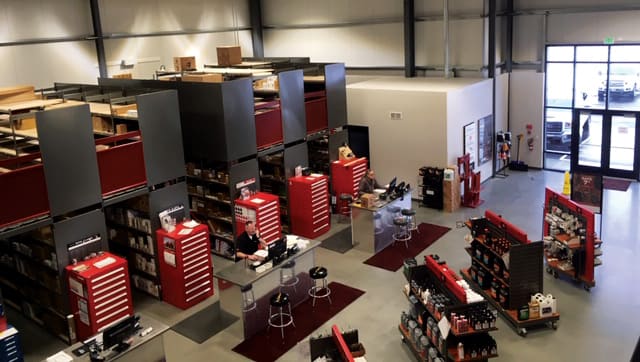
Agri-Service’s Fruitland, Idaho, store has E-Z-Rect Parts Shelving, a stackable racking system. The high ceilings in the showroom and parts department allow for a second level of parts storage.
Western Tractor Opens New 32,000 Square Foot Location
Western Tractor’s new store in Medicine Hat, Alta., includes a Dirtt wall system for office doors and windows. The sliding doors save space and the windows provide more natural light for employees.
John Deere dealer Western Tractor built a new facility in Medicine Hat, Alta., and held a grand opening on March 1. “When building the new location we looked at the problems we had with the old facility and how we could solve them. These problems could be anything from time it takes to do a process, safety, storage, customer expectations, work we couldn’t do because of the space (i.e. overhead roof heights), picking parts, etc. With these problems in mind, we investigated ways to make things easier or more productive, plus new opportunities for the future,” says Nathan Andrews, marketing coordinator, Western Tractor.
The new 32,000 square foot facility sits on 20 acres, with 40 more acres still undeveloped. The new facility includes a combined training room/lunchroom. The old location didn’t have any training room for customers and staff. The new building has a dual use room with a dividing curtain if more space is needed.
The service department now has 2 overhead cranes. The old facility didn’t have any overhead cranes, which caused safety and productivity issues, Andrews says. It also has a dedicated wash bay instead of sharing space with the shop.
“The shop has 17 overhead doors — one on each work bay. The old facility had 3 doors in the shop and equipment needed to be scheduled to be all done at the same time otherwise you could not move pieces out in the middle of the shop with other units still in repair, blocking it from door. It was a musical chairs exercise,” he says.
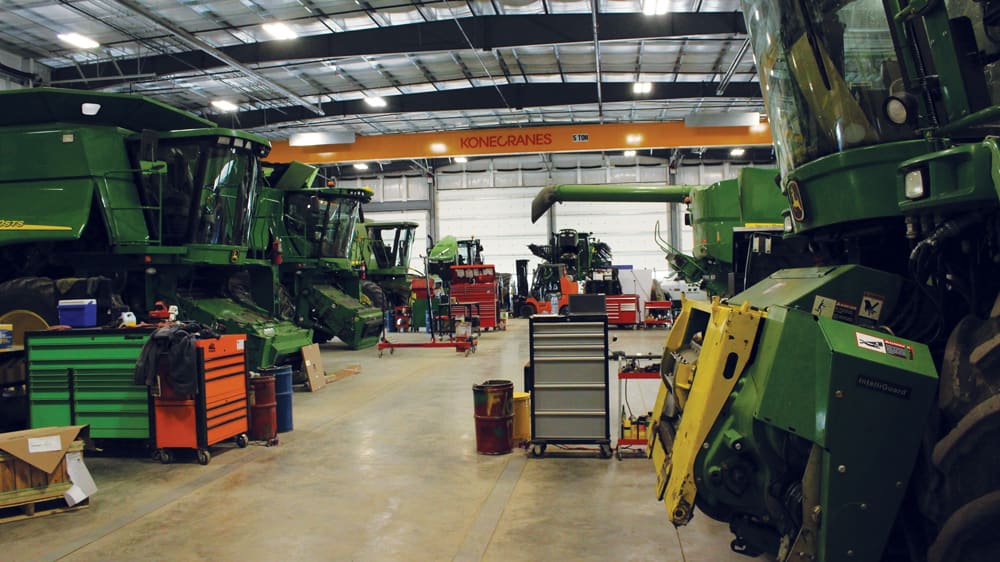
In the service department, Western Tractor installed 17 overhead doors, one for each service bay. Two additional overhead doors with a removable pillar in the middle allow a large enough opening to pull an air seeder into the shop for service.
In addition, there are 2 more overhead doors at the back of the shop that can be opened with a pillar in the center that is removable after opening. This creates a large enough space to pull in an air seeder. Other improvements to the service department include having power running down the middle of shop floor using channels in the floor with steel covers, Andrews explains. Cords can be popped up where needed in shop bays. All the shop bays now have metered hose system for bulk oil. “Technicians can input work order number and litters and pump the needed amount directly into machine. This saves time and costs, and no more pails of oil are being hauled to shop,” he says.
The parts department also saw a number of improvements. The new facility has tiered parts shelving and there are 2 floors of parts storage using shelving systems and Vidmar cabinets, Andrews says. In addition, there is now outdoor cold storage for large bulky items, something Western Tractor didn’t have at its old building. “We either had to find room inside or leave it outdoors in the yard,” he says.
Andrews says the entire facility has easy to clean surfaces. The parts and service counters are stainless, the main floor is polished cement in the showroom and there are drains in shop floor.
The building also uses the Dirtt wall system for door and office windows, which makes use of space saving sliding doors. No room is wasted for in or out swinging doors, it provides a quiet office interior and open glass let’s light flow through the area.
Tulsa New Holland Makes Modern Updates
Updating its facility is a regular practice for Tulsa New Holland in Tulsa, Okla. “Our building has some age on in being built in 1962, but you would never know it is that old as we try to do a little updating each year,” says Kelly Umphrey, general manager. “We do this to keep the store looking sharp and welcoming for our customers. There is a whole new generation out there and a dusty old farm store just isn’t pleasing to them. When people visit from other dealerships to pick up a transfer or manufacturer reps come by, they often comment on how clean and neat Tulsa New Holland is.”
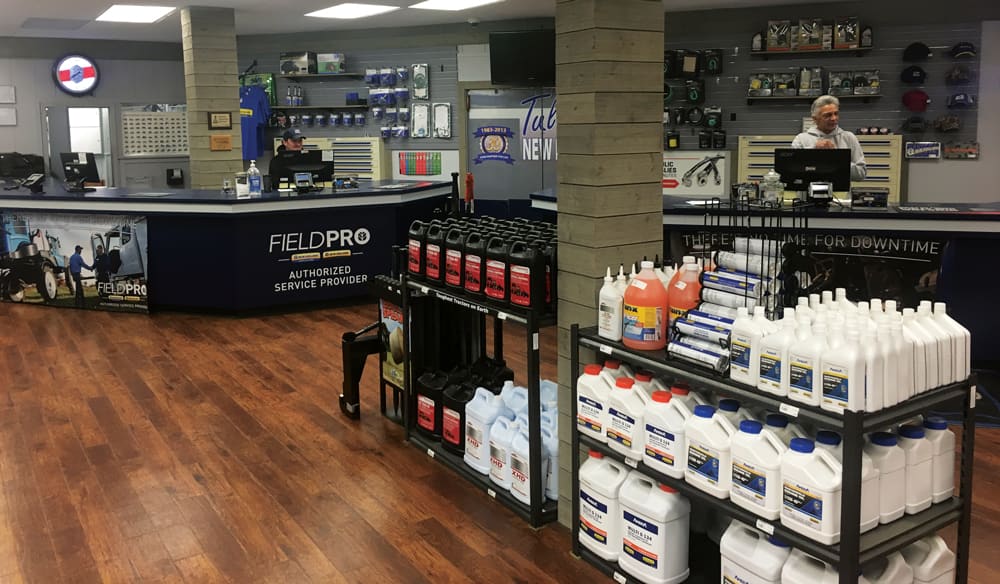

Tulsa New Holland’s facility was built in 1962, but the dealership is committed to making small updates each year, says Kelly Umphrey, general manager. This year, the dealership trimmed out the showroom with barn wood and updated the windows that were original to the building.
In the last year, the dealership has trimmed its showroom with barn wood, replaced the old windows from 1962, updated the customer waiting area and replaced a lot of concrete in the driveway.
“We also put in a new state-of-the-art security system in place in 2018, which virtually stops losses from theft. It is also helpful to our management team to monitor what is going on in the dealership at all times,” Umphrey says.
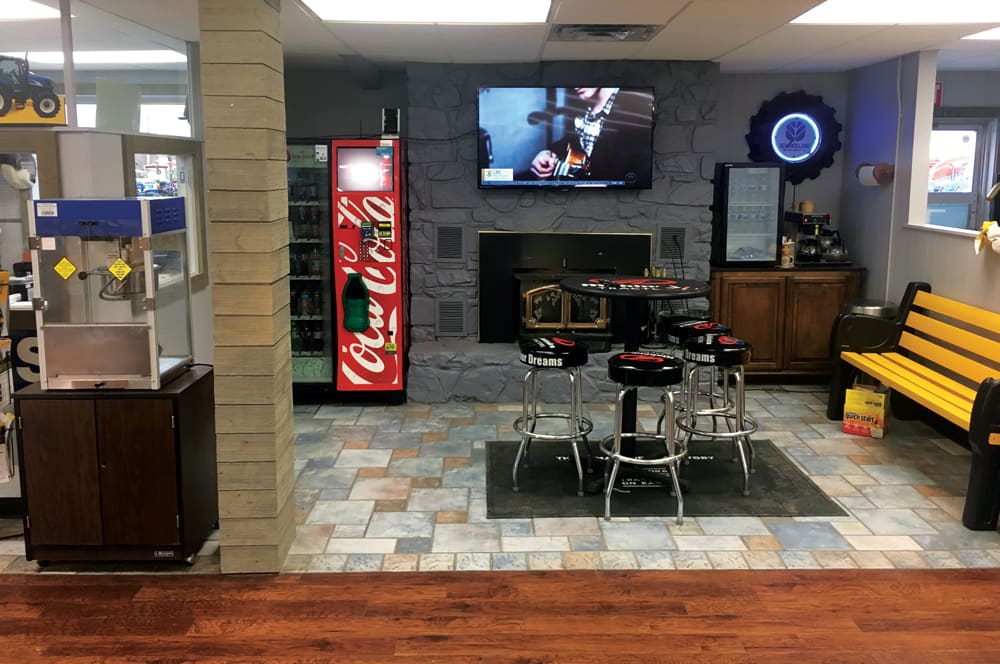
Tulsa New Holland’s’ most recent facility updates included redoing the customer waiting area.
Monroe Tractor Completes $1 Million Renovation Project
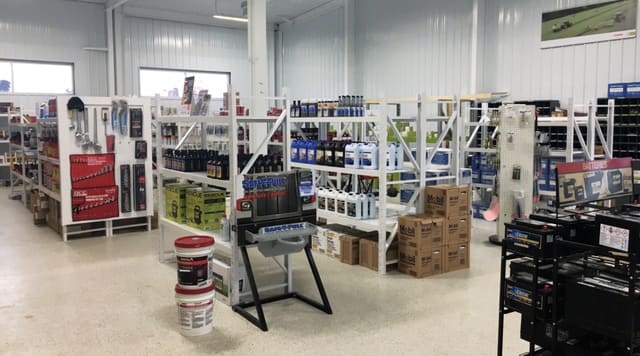
In 2017, Monroe Tractor added 2,400 square feet to its showroom and parts department and also improved the lighting. Previously, there was no natural light in the parts department.
Monroe Tractor recently celebrated the 30th anniversary of its Adams Center, N.Y., location. In 2017, the dealership made a $1 million update to the facility by adding 8,000 square feet of service bays and 2,400 square feet to the parts department and showroom. The whole renovation was completed in 5 months.
“Our decision to make the infrastructure improvements was predicated on several things,” says Jim Munroe, branch manager of the Adams Center store. “Equipment continues to increase in size. We need to grow in floor footprint, as well as height. The original shop was designed when equipment was smaller, we needed more efficient flow on the floor. The facility now has 2 large overhead doors, instead of one.”
The Adams Center store is in what Munroe describes as “snow country,” which means all 10 technicians had to work inside during the winter months. The old facility was cramped for space when the whole staff was confined to the shop, he says.
The renovation included improvements to lighting. “We wanted our employees to have better lighting and to include natural light. Happier workers means better morale,” he says. “Prior to the expansion, the parts storage and display area was small and dimly lit with no natural light.”
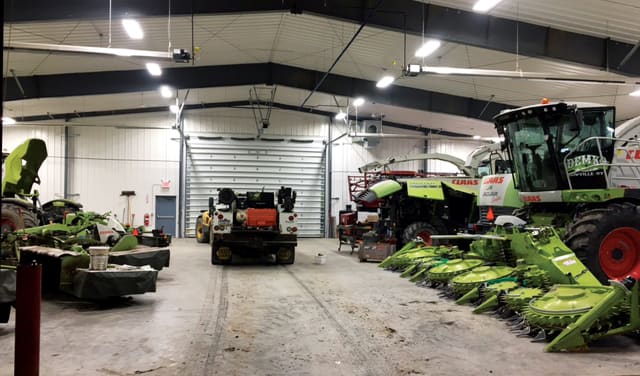
Part of Monroe Tractor’s $1 million facility update in 2017 included adding 8,000 square feet to the service shop. The new shop now has 2 large overhead doors instead of one.
He adds this is also a safety issue. “Overstuffed and dimly lit work environments can pose safety concerns and obviously, we want a safe environment with room to move that is well-lit.”
The outside of Monroe Tractor saw some improvement as well. “During excavation, we had to hammer out tons of rock. Monroe Tractor carries a line of rock crushers and we were able to crush our own stone and expand our equipment yard and parking areas. This was important for two reasons. First, in the winter we need room to push and store snow, and second, we eliminated much of the grass on the display yard, which tends to be inconvenient due to the amount of care necessary to keep the yard looking presentable.”
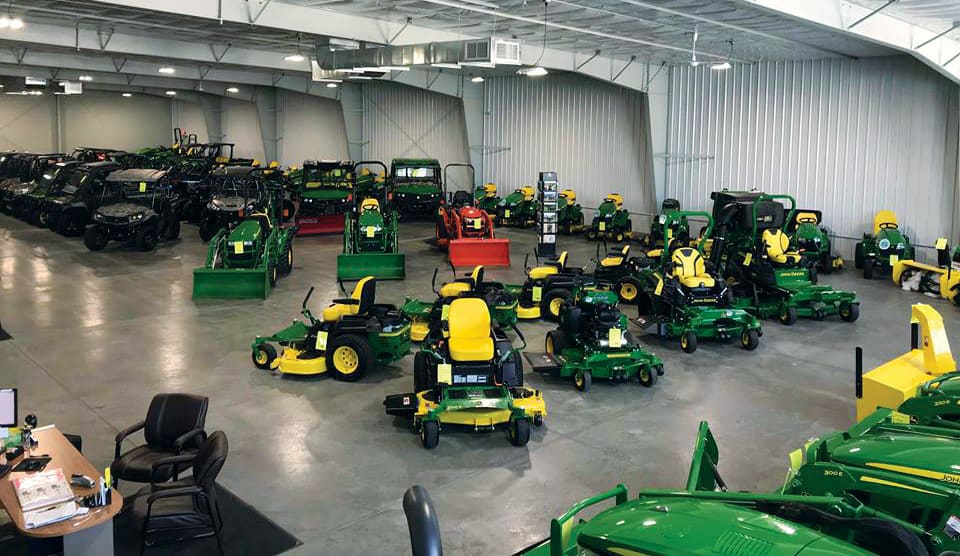
Wisconsin-based rural lifestyle and power sport dealer, Power Pac recently added a second 10,000 square foot showroom dedicated to its turf and compact tractor equipment.
Power Pac, a John Deere rural lifestyle and power sports dealership, recently added a second showroom to its facilities in Wisconsin to better highlight its mower and compact tractor lineup. Because the dealer is located in central Wisconsin, weather can be a challenge if units are stored outdoors. To help even out the seasonal dips in sales, Power Pac’s new owners, Josh and Mandy Witt, added to the new facility in the first 5 months of ownership as they saw the growth potential for the line. With the additional 10,000 square feet of showroom and 6,000 for service and storage, Power Pac can now sell a compact tractor or zero-turn mower in a controlled climate in the middle of January, typically a slower month for the dealership.
The additional 6,000 square feet for service and storage is currently being used for customers taking advantage of the dealership’s new storage plan option, another tool to help increase revenue during slower sales months. Customers can add a storage plan on with their service plan which allows Power Pac the flexibility of choosing when they perform tune-ups on machines.
“Spring and fall are extremely busy times for our service department,” says Josh Witt. “Our service and storage package plan will allow us the flexibility to perform tune-ups when our shop isn’t full with other service work. This will keep our service team more accessible during the busy times and busy during the previously slow months. The whole idea is to even out the peaks and valleys in our revenue stream while also creating new services for our customers and new sources of profit to our bottom line.”
The service area addition was also built with growth in mind with reinforced beams and accessible electrical to add service bays when needed in the future.
The addition also allows Power Pac the advantage of having flex space for events. The dealership recently hosted its first compact tractor clinic.


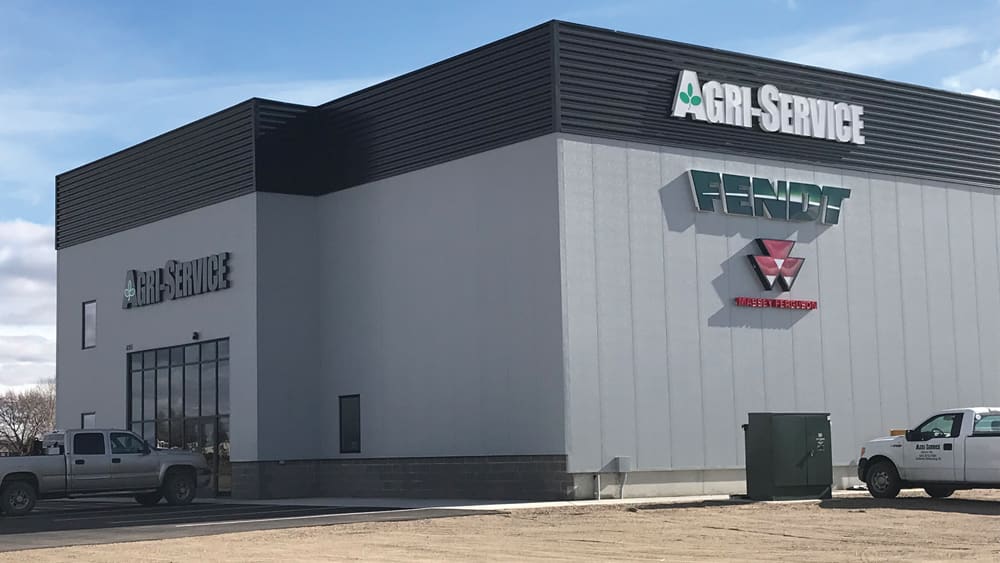
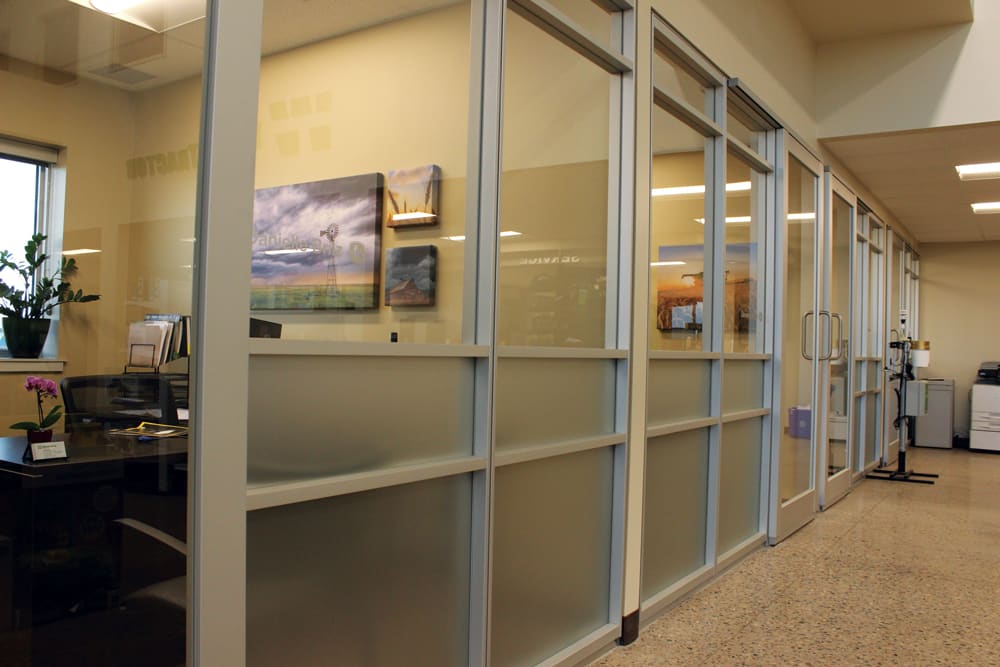






Post a comment
Report Abusive Comment